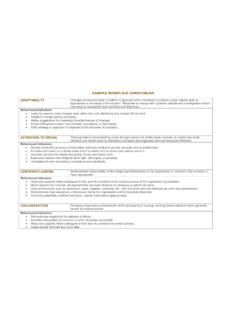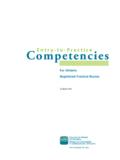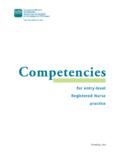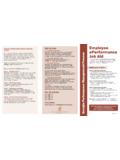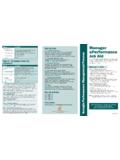Transcription of A new OECD project New sources of growth: intangible assets
1 A new OECD project New sources of growth : intangible assets In many OECD countries, investment in intangible assets is growing rapidly. In some cases this investment matches or exceeds investment in traditional capital such as machinery, equipment and buildings. Intensified global competition, ICTs, new business models, and the growing importance of the services sector have all amplified the importance of intangible assets to firms, industries and national economies. The global economic crisis has placed a new focus on how policies might help the accumulation of intangible assets and provide new sources of growth .
2 Concerns also exist that the crisis might undermine the financing of investment in intangible assets . And in many emerging economies policymakers are seeking to develop the intangible assets necessary for success in high value-added activities. What are intangible assets ? intangible assets are assets that do not have a physical or financial embodiment. Termed intellectual assets in previous OECD work, intangible assets have also been referred to as knowledge assets or intellectual capital. Much of the focus on intangibles has been on R&D, key personnel and software.
3 But the range of intangible assets is considerably broader. One classification groups intangibles into three types: computerised information (such as software and databases); innovative property (such as scientific and nonscientific R&D, copyrights, designs, trademarks); and economic competencies (including brand equity, firm-specific human capital, networks joining people and institutions, organisational know-how that increases enterprise efficiency, and aspects of advertising and marketing). Why are intangible assets important? A growing body of research shows rapid expansion of investment in intangible assets by companies in the United States, Japan and Europe, with significant impacts on productivity.
4 Evidence from a number of countries suggests faster growth in investment in intangible assets than in tangibles. In the United Kingdom, for instance, investment in intangibles is estimated to have more than doubled as a share of market sector gross value added between 1970 and 2004. Recent studies estimate annual investment in intangibles in the United States of between USD 800 billion and USD 1 trillion, with a stock of intangibles of up to USD 5 trillion. In many countries, the proportion of off-balance-sheet assets to on-balance-sheet assets (the price-to -book ratios of companies) has risen for decades.
5 Previously unmeasured intangible capital has been calculated to account for 18% of the growth in multi-factor productivity (MFP) in the United States between the mid-1990s and early 2000s. The World Bank estimates that, for countries, the preponderant form of wealth worldwide is intangible capital. And key business outcomes can be linked to investment in intangibles in 2004 in the United Kingdom around half of export sales from winners of the Queens Award for Exports could be directly attributed to investment in design.
6 Investment in tangible and intangible assets as a share of GDP (2006) 051015202530%Brand equity, firm specific human capital, organisational capitalR&D and other intellectual property productsSoftware and databasesMachinery and equipment What are the goals of the OECD project on intangible assets ? To provide structured evidence of the economic value of intangible assets as a new source of growth The project will seek to improve the measurement of intangible assets both at the macro and firm level, analysing their contribution to growth and their relationship to new business models.
7 The development of international comparative data for instance on design is in its infancy. Important distortions could arise if intangible assets are not properly accounted for in company and national accounts: Capital markets might misallocate resources for investment, given preferences for tangible assets as collateral. Within companies, management decisions could be distorted. Biased or fraudulent financial reporting might be facilitated. National income, saving and investment data could be understated.
8 Types and magnitudes of intangible capital may also vary across countries, with implications for growth . For example, research has suggested that Japanese service-sector firms hold relatively few intangible assets compared with the United States and that their growth opportunities could be diminished as a result. Other analysis suggests that slow productivity growth in European Union countries relative to the United States might be explained by differences in the accumulation of intangible assets .
9 To assess the link between intangible assets and the economic crisis It will be important to understand if the accumulation of intangible assets has been affected by the global crisis and whether investment in intangibles will continue to grow as it has in recent decades. intangible assets typically entail higher risks than those of physical or even financial assets , while the crisis has left many investors more averse to risk. And firms that use intangibles intensively may have experienced added constraints owing to the importance to investors of tangible collateral.
10 To improve understanding of current and emerging challenges for policy Understanding of the role of intangible assets in modern economies and the policies needed to foster their development and use is still poor. Research on intangibles is scattered across finance, accounting, organisation and management disciplines. This calls for a multidisciplinary approach in analysing key policy problems. Issues to address in this project could include: Is the nature of intangible assets changing in ways that should reshape policy?










